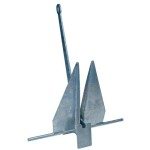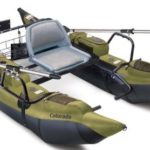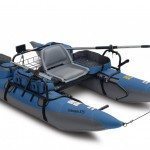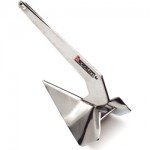These are the fundamentals for choosing a reliable battery for your trolling motor to keep you safely on the water and out of trouble. Answers to FAQ’s will give you a sound understanding of what to look for.
Finding the right trolling motor and battery can be a tall order as there’s a great deal of noise out there. Usually when you’re buying a boat or fishing kayak for the first time you’ll have a motor ready to go. But this isn’t always the case and eventually every trolling motor will need an upgrade, repair, or battery replacement.
The most important thing is to understand the lifespan of trolling motor batteries so you don’t ever get stranded.
If you’re still to get familiar with the ins and outs of trolling motors and their batteries, this overview will be useful.
What is a trolling motor?
Trolling motors are standalone units that affix to a boat, either at the bow or the stern. Every motor has controls, a propeller, and the motor itself. Trolling motors can be added to bigger boats in addition to an outboard motor or on smaller vessels like kayaks and inflatable fishing boats.
What batteries can I use with my trolling motor?
There’s 2 batteries commonly recommended for trolling motors. A lead acid wet-cell, and AGM battery.
What does AGM stand for?
Absorbed Glass Matt
What’s the difference between a wet cell lead acid battery and sealed AGM?
Both the lead acid wet-cell and AGM have their pros and cons. The lead-acid is a more common sight in boats because it’s cheapest.
Lead Acid Wet-Cell Battery
The positives:
- Recharges well
- Has a lifespan of up to 1 1/2 years
Negatives
But there are downsides. Lead acid wet-cell batteries are more likely to have vibration and spillage incidents, and will need maintenance from time to time.
AGM Batteries
- These will cost you more than lead acid batteries; usually twice as much, but they will last longer.
- A boat can get up to 4 years of use out of an AGM.
- They are maintenance-free, which makes them ideal for any new boat owner.
What’s a deep cycle marine battery?
A deep cycle trolling motor battery is intended to withstand the rigors of constant use and charging. This is an important consideration as many batteries fail (either immediately or over time) due to charging issues.
What’s the difference between a deep cycle vs dual purpose battery?
A dual purpose battery has the ability to recharge like a deep cycle battery, and also provides power to start the engine swiftly.
The Noise Factor – Why choosing a quality battery is critical
Buying an inexpensive motor may save a few dollars but they can sometimes be much louder. For anyone using a trolling motor in a boat for fishing, snorkeling or similar pursuits, seeking out a quieter motor is a wise choice. And you’ll scare away fewer fish.
How much power do I need in my trolling motor?
The general rule of thumb is that you need to allow a minimum of 2 lbs (approximately 1kgs) of thrust for every 100 lbs (or approximately 45kgs) of weight in your boat. This includes you and any other people in the boat, boat weight and gear.
You need to factor in environmental variables. If the trolling motor will regularly be used in a place where there is strong current and winds, a more powerful motor is needed.
It’s important to keep in mind your needs over the lifespan of the battery. For example, even if right now you’re only planning to use your boat (and current battery) in a calm local creek, are you planning to go on an open ocean journey in a couple of months? Save time and money now by buying a battery that will tackle those tougher conditions.
What’s the difference between saltwater and freshwater trolling motors?
A motor used in saltwater has to be constructed using materials that can handle the harsh corrosive environment that saltwater imposes. Non-corrosive materials like stainless steel, marine-grade alloys, anodized metal and powder coated paints are materials used in construction.
Generally freshwater doesn’t pose many problems to a trolling motor, but saltwater can. You need to buy a trolling motor that matches the waters the boat will (mainly) be used in. Saltwater trolling motors can be used in freshwater, but not the other way around. Freshwater motors aren’t suitable for saltwater use.
If intending to use a trolling motor in saltwater, attention to regular maintenance is required. After every use the motor needs to be rinsed, thoroughly, with freshwater and the motor stored inside protected from the elements.
Can I use a starting battery for an electric trolling motor?
No, this should not be done. Starting batteries (AKA ‘cranking batteries’ and ‘cold crank amps’) do have their uses, as they provide powerful but quick bursts of energy over a small time period to start the engine, and then get recharged via the engine alternator. But using a starting battery in an electric trolling motor will cause the battery overheat.
How long does a battery charge last and take to charge?
How fast a battery will recharge can depend on the amperage rating of its charger, and the battery. The higher the amperage, the faster the battery recharges. If you use your boat heavily and require rapid recharges, a 10 to 15 amp charger is best.
For less powerful batteries or if you don’t need rapid recharges, a 5 amp battery can suffice. Using one will charge a battery in around 12 hours.
How does hour rating and amperage work together in a battery?
Combining the hour rating and amperage of a battery helps determine how long it will run before requiring a recharge. To do this, take the battery’s amp hour rating, and then divide it by the amperage draw.
Performance in terms of run time depends on water conditions and type of battery used. As a guide, we found these stats when using a 100 amp battery
- top speed – 2 hours
- medium speed – 4 hours
- slow speeds – 14+ hours
Lifespan and storage tips
- Different types of battery should never be mixed; neither should fresh and old batteries. When not in use for long periods of time, store them in a cool, dry place – but maintain a trickle charge when doing so.
- If you can’t find a battery with an amp hour rating, ensure you select one with at least 180 minutes worth of reserve capacity.
- Charge batteries ASAP after each use.
- When it comes to wet-cell batteries, check regularly the fluid levels. If need be, top them up.
- Batteries should also be monitored for corrosion often. If any appears, clean it off promptly. Cleaning can be done with water and baking soda.
Which trolling motor and battery is best for me?
This depends on your answers to these 4 questions
1. What sort of watercraft do you have? A kayak could need a different trolling motor and battery from a dinghy.
2. Are you mainly using a trolling motor in saltwater or freshwater?This is important as saltwater motors are constructed to handle that harsh environment. Some of the smaller transom motors can be used in either environment.
3. How quickly do you need to recharge a battery after each use? Whether you want to make do with a wet-cell battery and do more maintenance, or pay more for a sealed one that has less maintenance needs.
4. The weight factor.
If you’re heading out in a kayak for example, you have weight limits to consider. It’s important to remember a starter battery should not be used in an electric trolling motor. Doing so will result in overheating of the battery.
Beyond these factors, much of the decision comes down to individual needs. So take your time, do your research, and have fun out on the water.







